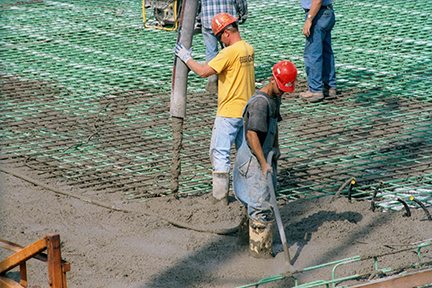Directly after it is placed, concrete can contain entrapped air, which varies in amount depending on a number of different factors including slump, placement method, form size and the amount of reinforcing steel used, usually falling in the one to two per cent range. Nevertheless, entrapped air occurs as a result of the cement paste’s inability to close with the aggregate, which causes voids or air bubbles.
Entrapped air is not beneficial to the concrete and should not be confused with entrained air, which helps concrete durability in climates with freeze-thaw and is created with an air entraining admixture. Entrapped air pockets or voids are spread throughout the concrete and have negative effects on product appearance, strength and durability.
Thankfully, vibration techniques can be helpful in removing entrapped air; however, they need to be done properly and with a great attention to detail.
A few suggestions on proper vibration:
- Over-vibration causes the concrete to segregate, causing heavy material like aggregates to sink to the bottom and lighter materials like the cement paste to float to the top.
- High slump mixes such as self-consolidating concrete (SCC) usually do not need vibration, and are at greater risk of segregating if they are vibrated.
- Contractors to have enough vibration equipment on hand to account for malfunctions during the pour.
- Areas requiring extra care and attention include the bottom of slabs (to encase the lower layer of rebar), and around construction joints (to prevent leaks). It is particularly important to reach down to the bottom of walls to consolidate the wall-to-slab joint, as this is where most leaks occur.
- Do not use a vibrator as a concrete placement tool – it could create and inconsistent surface
- The type of vibrator used must match the requirements of the concrete and the job-site
Vibration consolidates the concrete in two stages; first by moving the concrete particles and then by removing the entrapped air. A good vibration process will ensure concrete is finished properly and that it will have the required strength once it reaches its 28-day life.
For more detailed information on consolidating concrete, the American Concrete Institute (ACI) has a guide – Reference ACI 309R – ‘Guide for Consolidation of Concrete’ if you are unsure on how to proceed.





